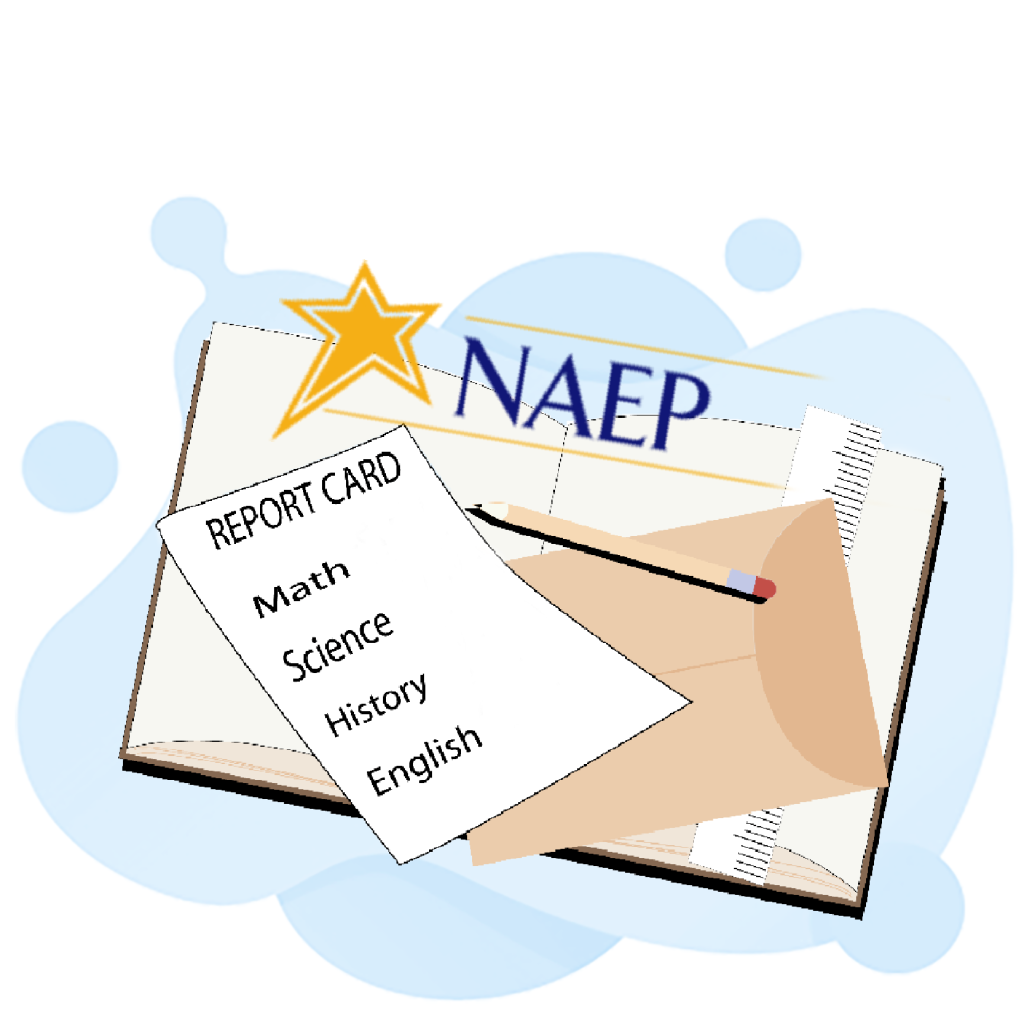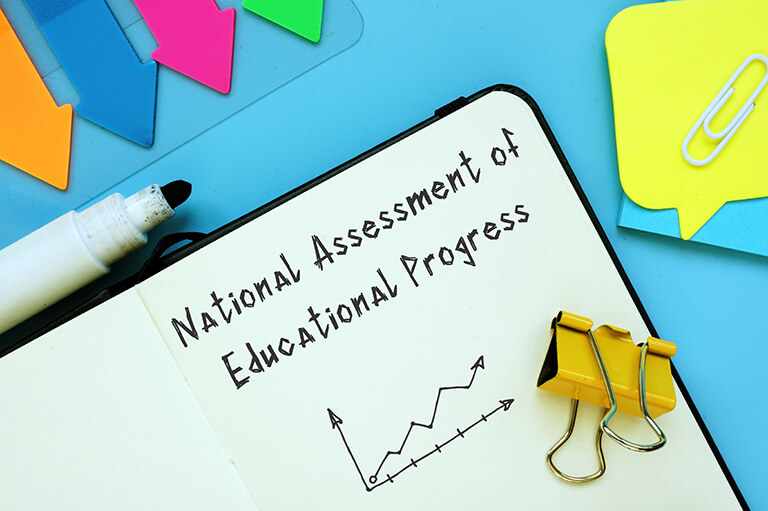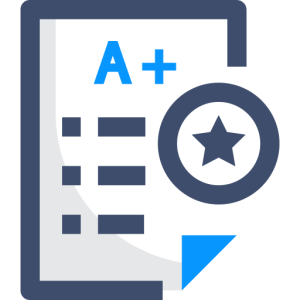NAEP Test 2025

NAEP 2025 is a national assessment of students in grades four and eight. It assesses student achievement in mathematics and reading. NAEP 2025 assessments are based on a sample of schools and students that reflect the geographical, racial, ethnic, and socioeconomic diversity of the nation.
Unlike state tests, which change every few years, the questions and problems in NAEP remain consistent from year to year. This allows for more accurate long-term trends to be measured.
FREE NAEP Practice Test Online
National Assessment of Educational Progress
The national assessment of educational progress (NAEP) 2025, also known as “the nation’s report card,” is the only comprehensive, ongoing effort to obtain dependable achievement data on a national basis. It is congressionally mandated and overseen by the National Center for Education Statistics (NCES). Unlike state tests, which reward or punish students and teachers, NAEP assessments are neutral and free from incentives to cheat or teach to the test. Consequently, they provide important information to policymakers and the public.
NAEP results are described in terms of average scale scores and percentages of students attaining three achievement levels—basic, proficient, and advanced. The assessments are administered to a representative sample of students in grades 4, 8, and sometimes 12 across the nation. The assessments are in subjects such as mathematics, reading, science, writing, arts, civics, geography, economics, and U.S. history.
While the NAEP has been criticized for its reliance on textbooks, it is the closest thing the United States has to nationwide academic standards. Nevertheless, a new framework has provoked criticism for its attempts to reduce the role of formal knowledge in reading skills.
NAEP Scores
The NAEP, also known as The Nation’s Report Card, is based on a representative sample of students from public and private schools. It measures students’ knowledge in a variety of subject areas, including math, reading, writing, science, history, civics, and art. Results are released nationally and by state, allowing comparisons among student groups and between states.
Many school leaders look at overall NAEP scores to gauge the strength of their systems. But to really understand the needs of students, they must examine disaggregated results. These data provide information about the academic performance of each student, school, and district.
Students come from different backgrounds, and they bring their own frames of reference to the passages that are read on the tests. This means that the average scale score of a student may not mean much to someone who doesn’t have the same background. The more meaningful measure is the percentage of students who attain an achievement level, which represents how well students are meeting set standards. This interactive tool shows how the average scale scores and achievement levels have changed from one year to the next.

NAEP Conference 2023
The National Assessment of Educational Progress, or NAEP, is one of the most widely cited sources of information about education. It is used by policymakers and journalists daily to track trends and evaluate the quality of education in the United States. Hager Sharp has provided communications support to the NAEP for more than 20 years, including strategic planning, media relations, materials development, digital engagement, and research and evaluation. The NAEP Studies SIG Newsletter is a quarterly publication that announces meetings, business items, and other news related to the SIG. The latest issue is available here.
The 2023 NAEP conference is entitled Practice Education – Enabling Transition and will be held on Thursday 12th October at The Studio, Birmingham. PaymentWorks will be exhibiting at this year’s event, stand 27, with Tim, Gemma and Abbie available to discuss how our technology can facilitate e-procurement. They will also be showcasing their popular community products; the P Pod and Custom Home Chair, as well as a new product; the ODE Seating System, which provides advanced postural management for children.
NAEP Results
The 2022 NAEP results show that student achievement in America is rising, but it is still too early to tell what these gains mean. While gains in reading and math are significant, it is difficult to know what they mean for students’ overall academic knowledge. However, these gains continue a long trend of steadily improving math and reading scores that began in the 1990s.

The NAEP program conducts assessments in reading, mathematics, science, history, civics and government, music, visual arts, and writing at the national level for grades four and eight. Each year, about a million students take these national tests. The tests are designed to measure what students learn in major school subjects, and the assessment data are reported nationally and by state. The test questions and responses are kept confidential, so results are not available for individual schools or students. The program also conducts special studies that involve special data collection processes, secondary analyses of NAEP data, and evaluations of technical procedures. The program is overseen by the National Assessment Governing Board.
NAEP Math Scores
NAEP 2022 results have been released, showing nationwide declines in reading and math scores for students in grades 4 and 8. Educators, policymakers, researchers, and parents are concerned about these findings. The declines are especially significant for low-income students.
The decline in NAEP math scores was the largest decrease observed in more than 50 years. It also marked a return to levels of nationwide performance that many Americans find disappointing and frustrating. Moreover, gaps between historically advantaged and disadvantaged students remain distressingly wide.
In contrast to the decline in math scores, NAEP civics scores remained steady or climbed slightly. This may be because civics skills are developed from a wider range of learning experiences than other subjects, and this type of learning occurs both inside and outside of school.
The NAEP is a nationally representative, continuing assessment of what America’s students know and can do. The assessment is administered to a nationally representative sample of students in grades 4 and 8. NAEP assessments provide information about trends in student achievement over time, including differences between students of different races and family income levels.

NAEP Assessment
NAEP provides national and state average scale scores that allow comparisons across grades and between states, districts, and student groups. The results of the assessments are analyzed and reported using widely accepted statistical standards. They are also available in a variety of formats, including graphs and tables.
Students are selected by school and district to participate in the assessment, and their answers are kept confidential. The assessments are designed to be uniformly administered and serve as a common measure for the nation. The federal Every Student Succeeds Act requires that schools participating in main NAEP give assessments in reading and math at grades four and eight.
The assessment includes subjects such as civics, economics, geography, history, mathematics, music, reading, science, technology and engineering literacy, writing, and U.S. history. The average scale score represents how well students performed on the test, while the achievement levels indicate the extent to which their performance meets expectations of what they should know and be able to do. Average scores are estimated based on the performance of a representative sample.
NAEP Data
NAEP is a national assessment program that tracks student learning in various subjects. The assessment program conducts state and large-district assessments in grades four and eight, as well as national assessments. It also assesses students with disabilities and provides results for individual students. However, the data is not comparable to state or local assessment data because it reports on a sample of students that may not represent the population of interest. For this reason, it is important to know the limitations of naep data.

The data from a naep test are only estimates and therefore subject to considerable uncertainty, as indicated by the standard error of the estimate. These errors are related to the number of items that students respond to and the sampling distribution of the samples. The larger the sample, the smaller the standard error.
The National Assessment of Educational Progress (NAEP) has been measuring student achievement since 1969. It has a long history of tracking student achievement, and provides important information about the country’s schools. However, it is often misinterpreted or dismissed by policy makers and the media.
NAEP Rankings by State
Known as “The Nation’s Report Card,” the federally mandated tests are administered to fourth- and eighth-graders in public schools nationwide every two years. The 2022 results were released Monday, and show that students in both grades saw their scores decline compared to 2019. While officials often caution against directly linking the COVID-19 pandemic to student performance on standardized tests, National Center for Education Statistics commissioner Peggy Carr didn’t hesitate to attribute the historic drop to the virus’s toll on learning.
While state tests are more closely aligned to classroom standards and what students learn in their schools, they can’t be compared to NAEP because the latter uses different criteria for proficiency. Moreover, some states changed their tests between 2019 and 2022, which made direct comparisons challenging.
Massachusetts students outperformed their peers nationally, but the state’s scores dropped compared to 2019, reflecting the effects of the pandemic. Despite the decline, the state’s students remain well above national averages in reading and math. But not all students have access to the academic support they need to succeed, and the gap between high-performing and low-performing schools remains wide.
NAEP Questions and Answers
The greatest ongoing and nationally representative examination of what knowledge and skills American students possess in a variety of disciplines is the National Assessment of Educational Progress.
It stands for National Assessment of Educational Progress.
The U.S. Department of Education’s NAEP program disseminates data on regional and international student accomplishment. Additionally, it offers data on the evolution of student achievement. In grades 4 and 8, NAEP administers state exams. Additionally, they test students nationally in grades 4, 8, and 12.
NAEP was created to assess how well the country’s kids are doing academically in grades 4, 8, and 12.
Students are picked at random to participate in NAEP within each designated school and grade to be examined.
The majority of NAEP tests will last no longer than 90 minutes, including setup and travel time to and from class.
Every two years, the main NAEP reading and math sections are examined.
Every student, school, school district, and state must voluntarily participate in the NAEP, according to federal law. However, federal law also mandates that 4th and 8th grade NAEP reading and mathematics examinations be taken in all states that receive Title I funding.
All assessments take between January and March.
The NAEP serves as the federal government’s official indicator of how well kids are achieving over time in core academic disciplines in states and throughout the country.